|
ID |
Nickname |
Country / City |
Languages |
Taxonomies |
Comment |
Project / Group |
Map |

|
47164
|
|
United States
Kaneohe
|
|
|
KA : Puli means nothing. I assume it's someone's name trying to be Hawaiian but it means nothing in Hawaiian. closest is Puliki which is hug. Domain is retail.
|
Multilingual Hawaiʻi
|
|

|
47163
|
|
United States
Kaneohe
|
|
|
KA : Pū'ōhala menas the fruit of the hala. Pū is a very specific Hawaiian word for which there is no good translation but in this case it's like the fruit of the hala tree. The school is also a Hawaiian Immersion school
|
Multilingual Hawaiʻi
|
|
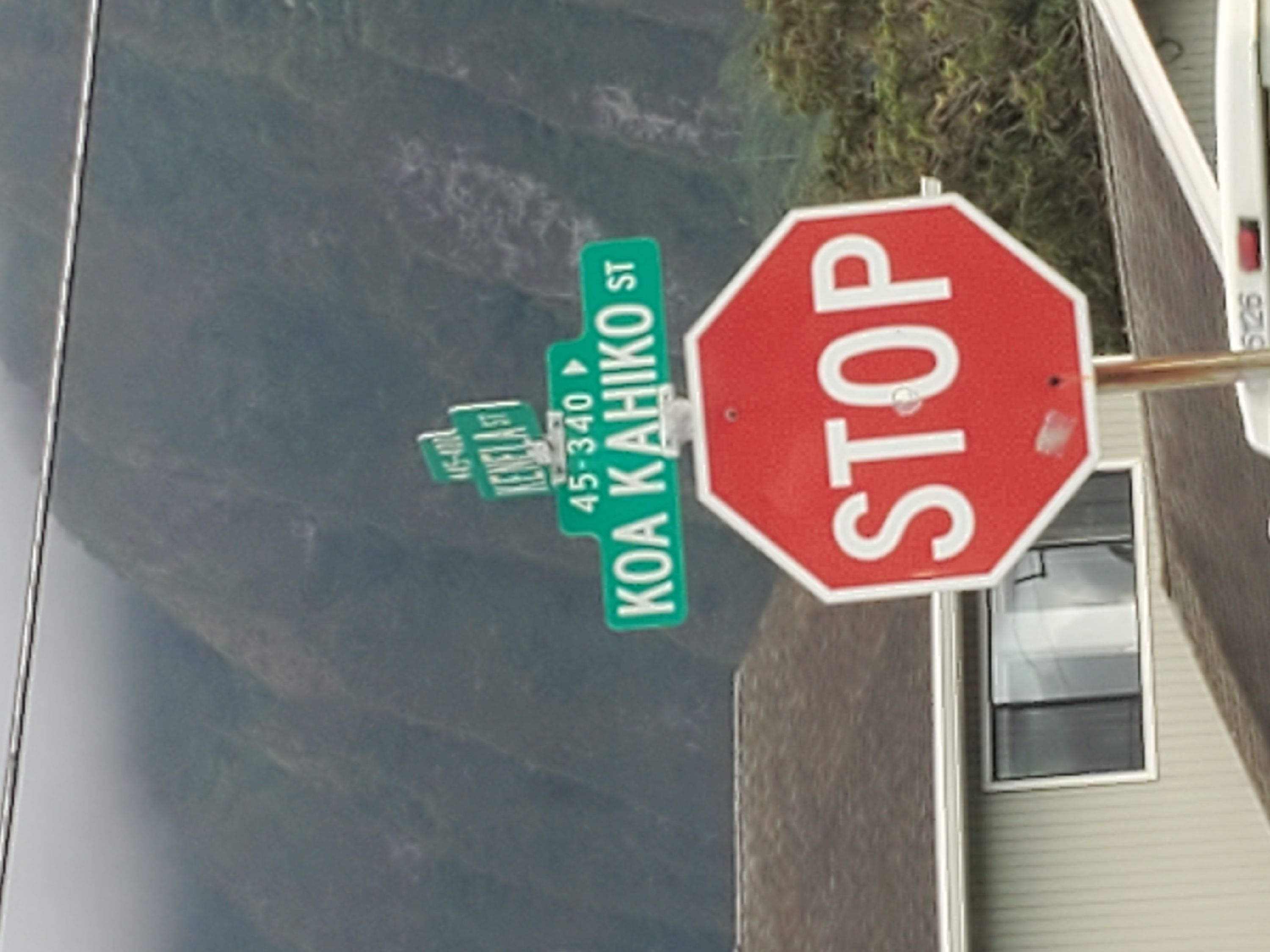
|
47162
|
|
United States
Kaneohe
|
|
|
KA : Koa Kahiko means "old warrior". Perhaps an old warrior lived on this street? I thought it was a cool name is all. Domain is transportation.
|
Multilingual Hawaiʻi
|
|

|
47161
|
|
United States
Kaneohe
|
|
|
KA : Ohana means family. And family isn't left behind.
|
Multilingual Hawaiʻi
|
|

|
47160
|
|
United States
Kaneohe
|
|
|
KA : Aumoku means swim boat. I just wanted to point out how dumb the name is. it could also mean "swim land mass" it doesn't really make sense. I just thought it was interesting. Domain is transportation.
|
Multilingual Hawaiʻi
|
|

|
47159
|
|
United States
Kaneohe
|
|
|
KA : The term "Crack seed" refers to a variety of snacks that are local favorites. From Li Hing seeds to Horse Shit (black licorice), it's difficult to categorize Crack seed without seeing a Crack seed store. Domain is retail.
|
Multilingual Hawaiʻi
|
|
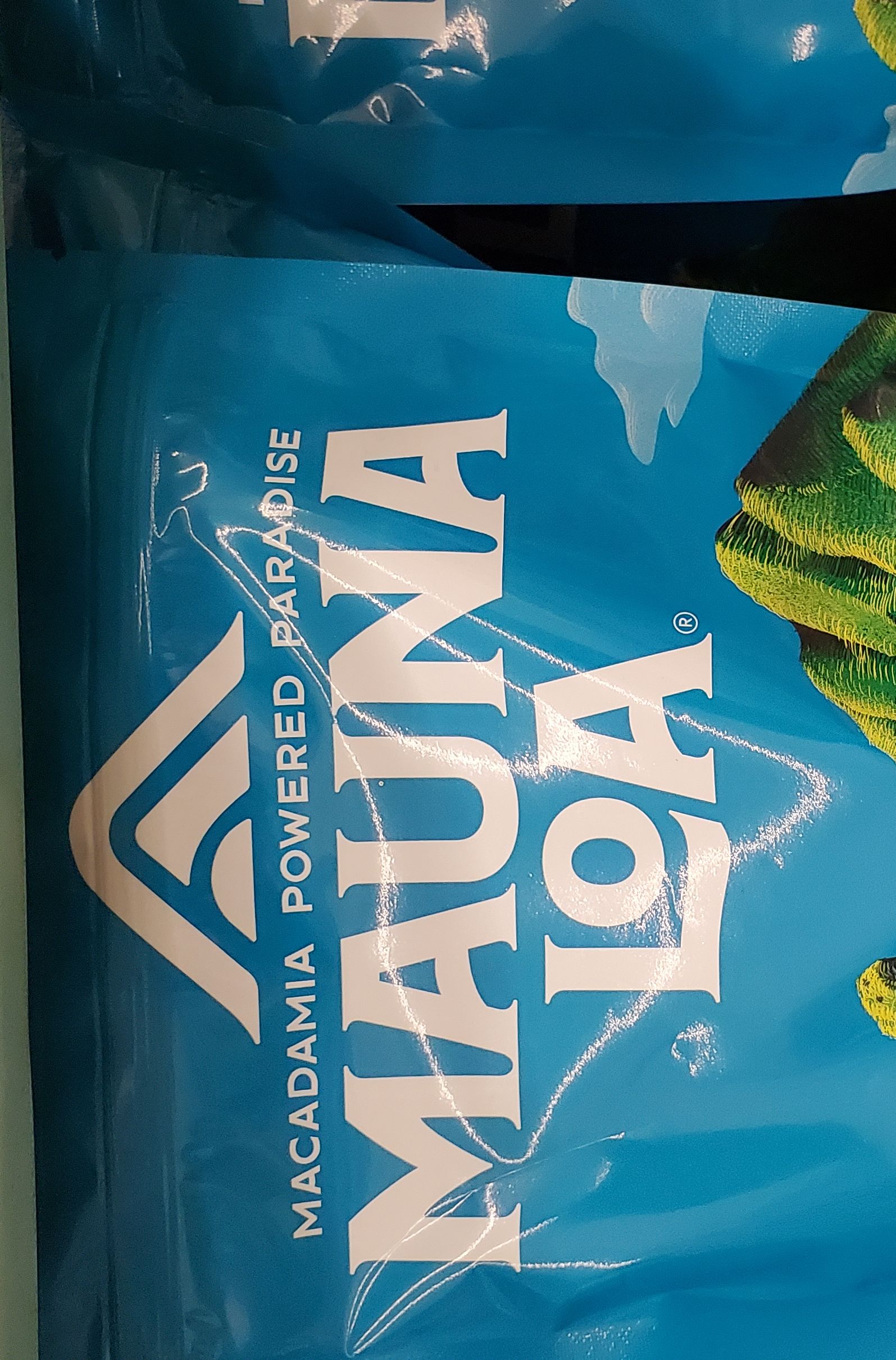
|
47158
|
|
United States
Kaneohe
|
|
|
KA : Mauna Loa is a mountain on the Big Island. It means "vast mountain" because of how big the mountain is. This is a classic brand who grow macadamia nuts there, they're obviously local and that's why people buy from them. Domain retail.
|
Multilingual Hawaiʻi
|
|

|
47157
|
|
United States
Kaneohe
|
|
|
KA : This is a dubious use of pidgin in my opinion. Usually Shaka Shaka is used ti appeal to tourists, not locals. But the product was in a local store. Nonetheless, tourists do love anything seemingly local but not too local and this fits the bill. Domain retail.
|
Multilingual Hawaiʻi
|
|
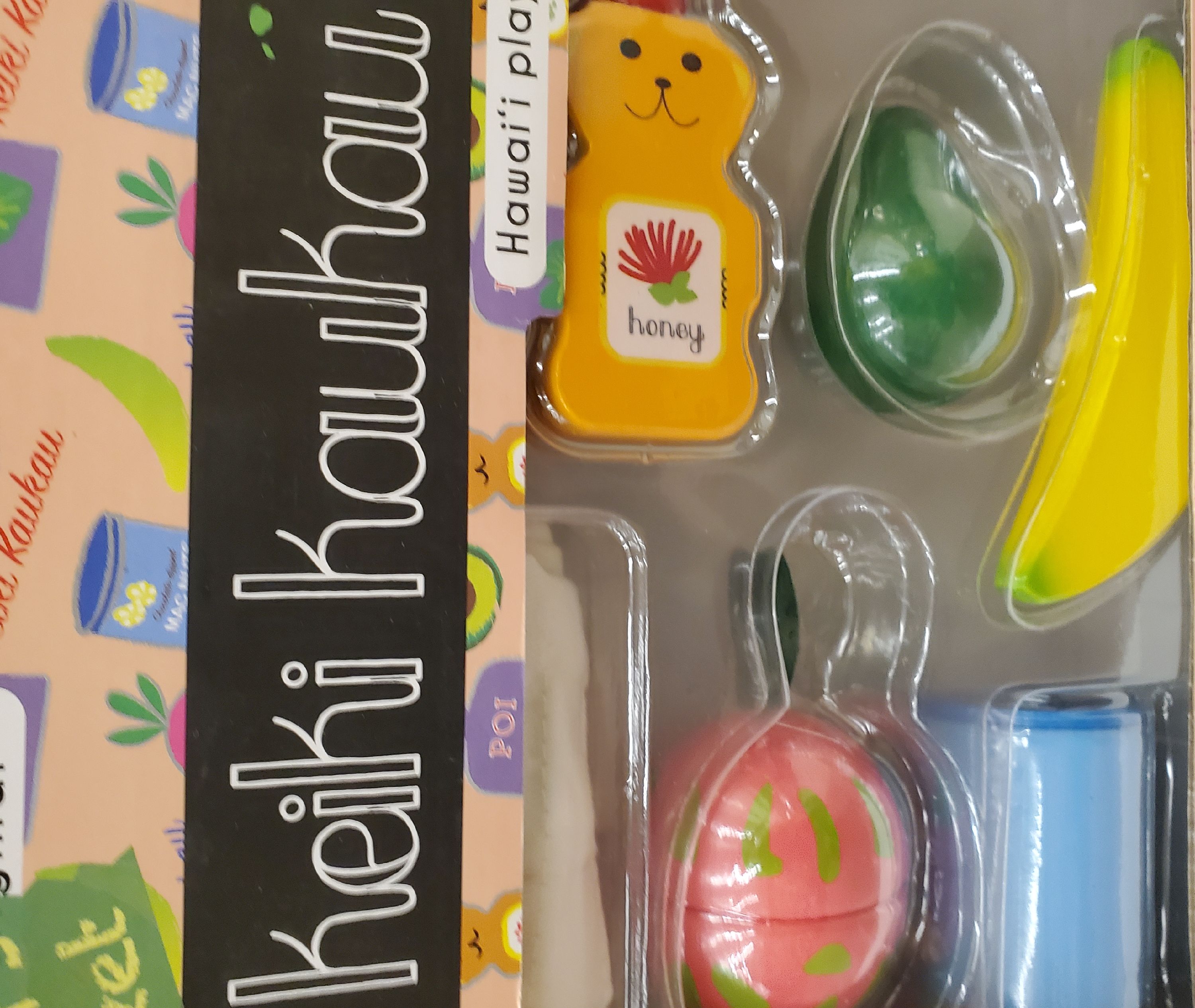
|
47156
|
|
United States
Kaneohe
|
|
|
KA : This could probably serve as either Hawaiian or pidgin, but I'm choosing pidgin. "keiki kaukau" means kid food. Which is what the box is full of, toys for children in the form of local foods. My guess is that someone thought it was adorable, because it is. Domain is retail.
|
Multilingual Hawaiʻi
|
|
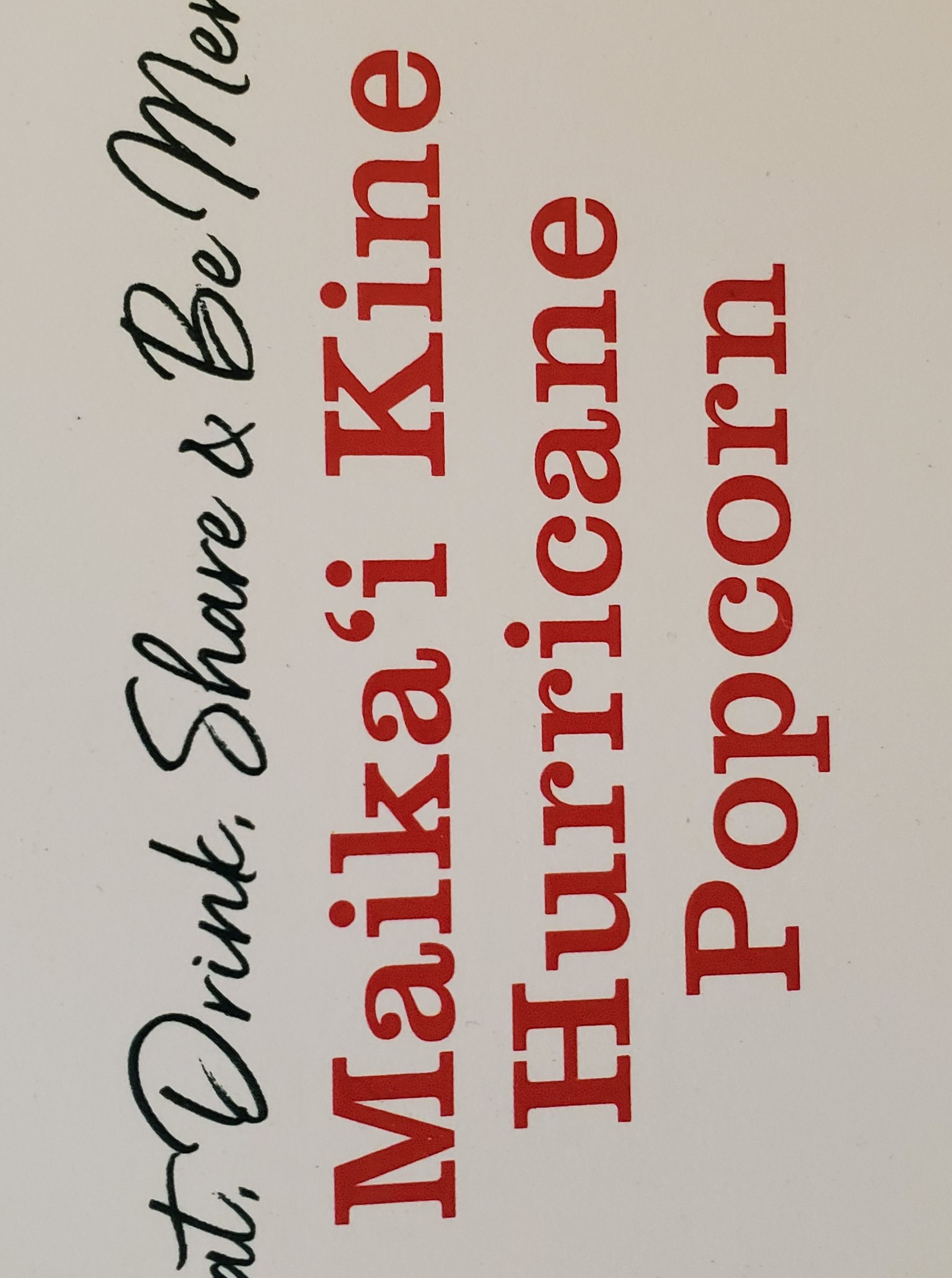
|
47155
|
|
United States
Kaneohe
|
|
|
KA : The pidgin here is "maika'i kine", meaning the good kind of popcorn. It i.plies to local buyers that this is a popcorn to be trusted because they're advertising in pidgin. Domain is retail.
|
Multilingual Hawaiʻi
|
|

|
47154
|
|
United States
Kaneohe
|
|
|
KA : Ku'ia is some kind of obstacle or to encounter an obstacles. As such I'm a little confused as to why one would use it as their brand name, I can only assume that it's their name. Despite all that though, the Hawaiian will still appeal to local customers. Domain is retail.
|
Multilingual Hawaiʻi
|
|

|
47153
|
|
United States
Kaneohe
|
|
|
KA : Meli means bee in Hawaiian. The choice to use meli instead of bee was probably to appeal to local buyers while still describing the product. Domain is retail.
|
Multilingual Hawaiʻi
|
|

|
47152
|
|
United States
Kaneohe
|
|
|
KA : Hapa is Hawaiian meaning half. Its use here is as a brand name, perhaps because the makers of the product are hapa perhaps because that's their name. Whatever the case, using a Hawaiian word for your brand makes it more appealing to locals who prefer to support local products. Domain is retail.
|
Multilingual Hawaiʻi
|
|

|
47151
|
|
United States
Kaneohe
|
|
|
KA : Kakimochi is a local term for fried "kaki" rice balls "mochi". In Japan it's called Arare. Here, the choice to use the local term instead of the Japanese one is due to its familiarity to most locals. Kakimochi is classic and well loved. the domain is retail/sales.
|
Multilingual Hawaiʻi
|
|

|
47135
|
|
United States
Kaneohe
|
|
|
SU: Check Up #3
- What languages are used on the sign?:
The languages that are used on the sign are Hawai’i Creole or Pidgin and English.
- How is the language presented?:
The Pidgin is presented in skinny, yellow letters and the English is presented in smaller letters in a variety of colors that are placed in different areas of the photo.
- Who is the audience?:
The audience is the general public, but would probably be more directed towards locals.
- What is the domain?:
The domain is on an example card for a T-shirt in the T&C store at Windward Mall.
- What is the sign telling people?:
The phrase “kanak attack” is the feeling of intense laziness you get from eating too much. The plate shown in the photo of the Katsu chicken, Mac salad, 2 scoops of rice, meat with soy sauce and the Hawaiian Style drink is a very popular plate on the island and normally after eating this big of a meal people feel so tired and lethargic they they just want to knock out. Which is why the shirt says “Home of the kanak attack”.
- Why is Pidgin/Hawaiian being used here?:
Pidgin is being used here because it is an entertaining way to make a shirt. By wearing this shirt, it would show that you’re a proud local since Pidgin is like a signature in Hawai’i and so is the food shown.
|
Multilingual Hawaiʻi
|
|
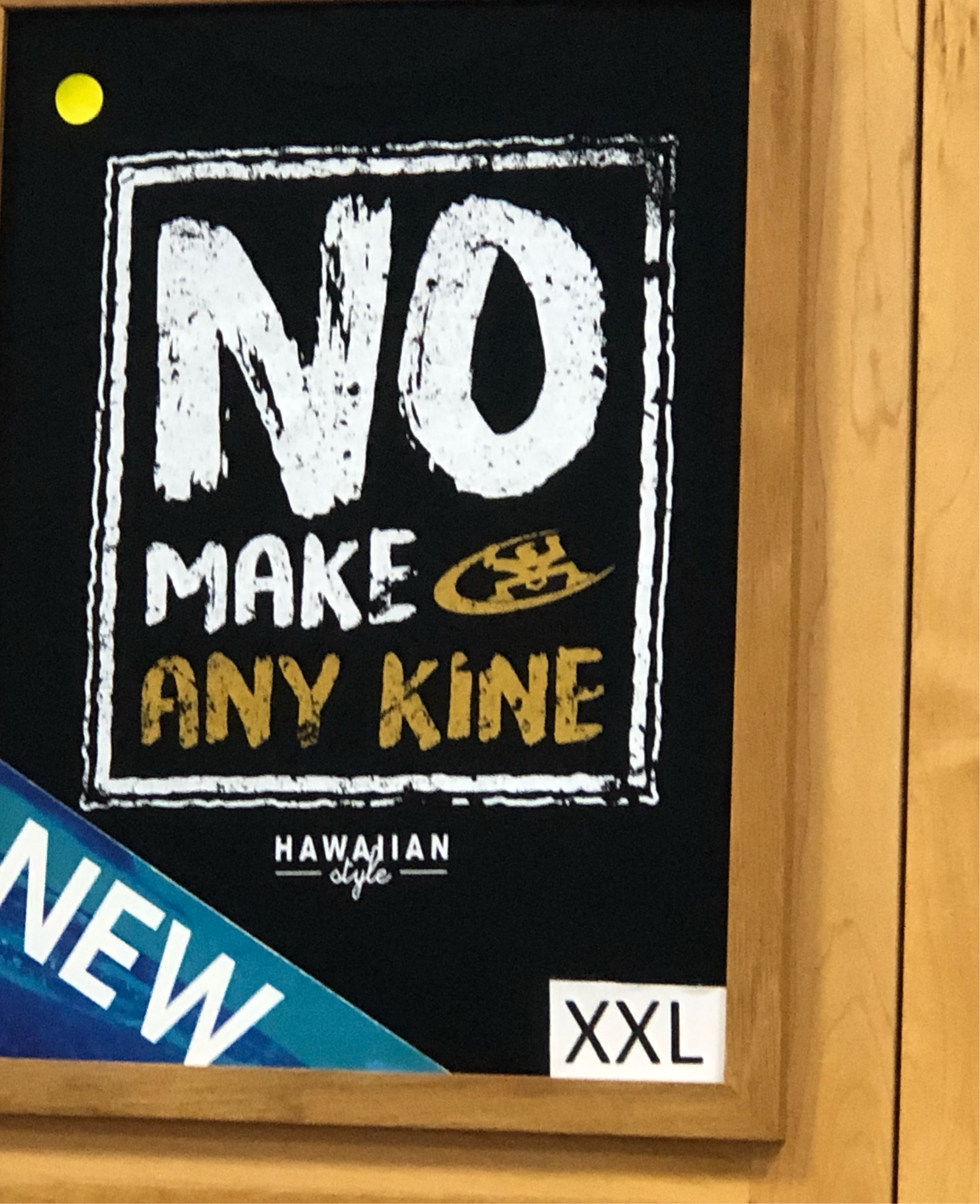
|
47122
|
|
United States
Kaneohe
|
|
|
SU: Check Up #3
- What languages are used on the sign?:
The languages that are used on the sign are Hawai’i Creole or Pidgin and English.
- How are the languages presented?:
The Pidgin and English are presented in big and bolded white and gold letters.
- Who is the audience?:
The audience is for the general public, but would probably be more directed to the locals.
- What is the domain?:
The domain is on an example card for a T-shirt in the T&C store at Windward mall.
- What is the sign telling people?:
The phrase “no make any kine” means don’t do things any type of way, have an intention behind whatever you’re doing.
- Why is Pidgin/Hawaiian being used here?:
Pidgin is being used here because it is an entertaining way to make a shirt and also because it is appropriate since we live on an island that consists of people who speak Pidgin.
|
Multilingual Hawaiʻi
|
|
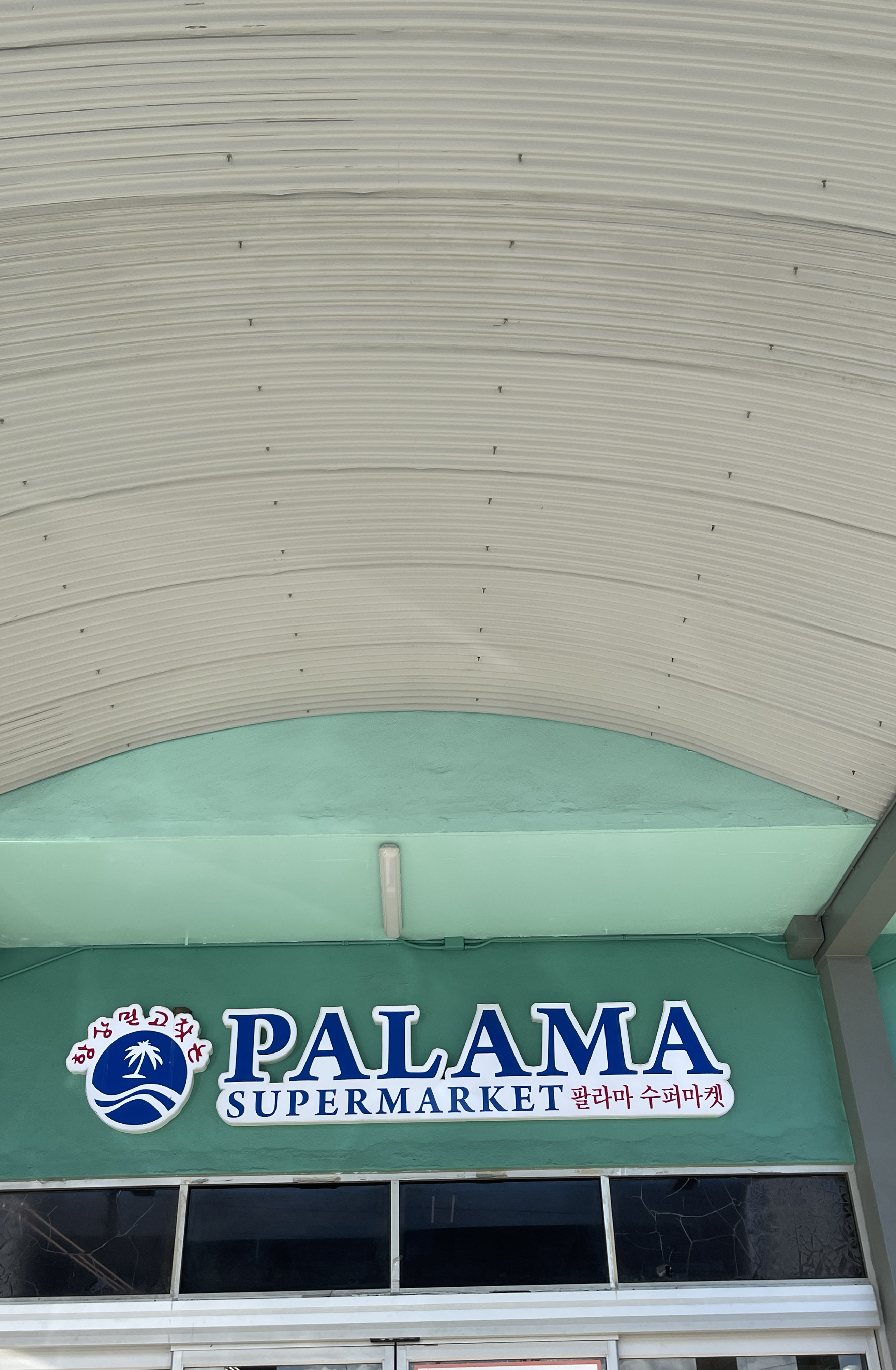
|
47091
|
|
United States
Aiea
|
|
|
SU: Check Up #3
- What languages are used on the sign?:
The languages that are used on the sign is Hawaiian, English, and Chinese.
- How are the languages presented?:
The Hawaiian language is presented in big blue letters, the English is presented in smaller blue letters, and the Chinese language is presented in red characters.
- Who is the audience?:
The audience is the general public, but would probably be directed to the locals and some tourists.
- What is the domain?:
The domain is above a supermarket in a public shopping area.
- What is the sign telling people?:
The word “palama” means to watch over; to guard; to keep guard as soldiers; to be guarded or watched over in Hawaiian.
- Why is Pidgin/Hawaiian being used here?:
Hawaiian is being used here to catch the attention of the locals who pass by this sign to attract them into the supermarket.
|
Multilingual Hawaiʻi
|
|
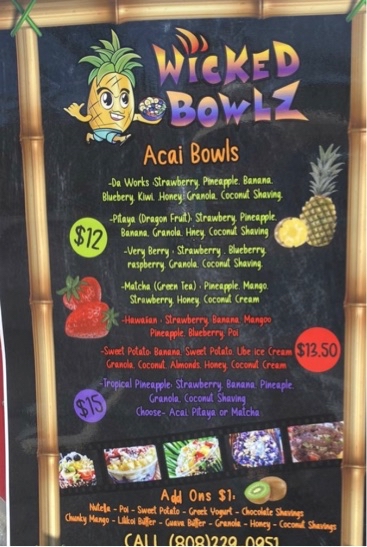
|
47080
|
|
United States
Waipahu
|
|
|
(SK) (#3) This photo is located in Waipahu and is a local Acai Bowl place. This sign is located outside of the business and is the menu of what they serve. It’s multiple colors and pictures makes it stand out and allows customers to view it. Pidgin is found in this photo by the label of the establishment “Wicked Bowlz” with the emphasis on the spelling of bowlz. Some think that acai bowls are a local delicacy of Hawaii and are local, however they are not. The intended audience is those looking for a tasty acai bowl to eat and looking over the menu.
|
Multilingual Hawaiʻi
|
|
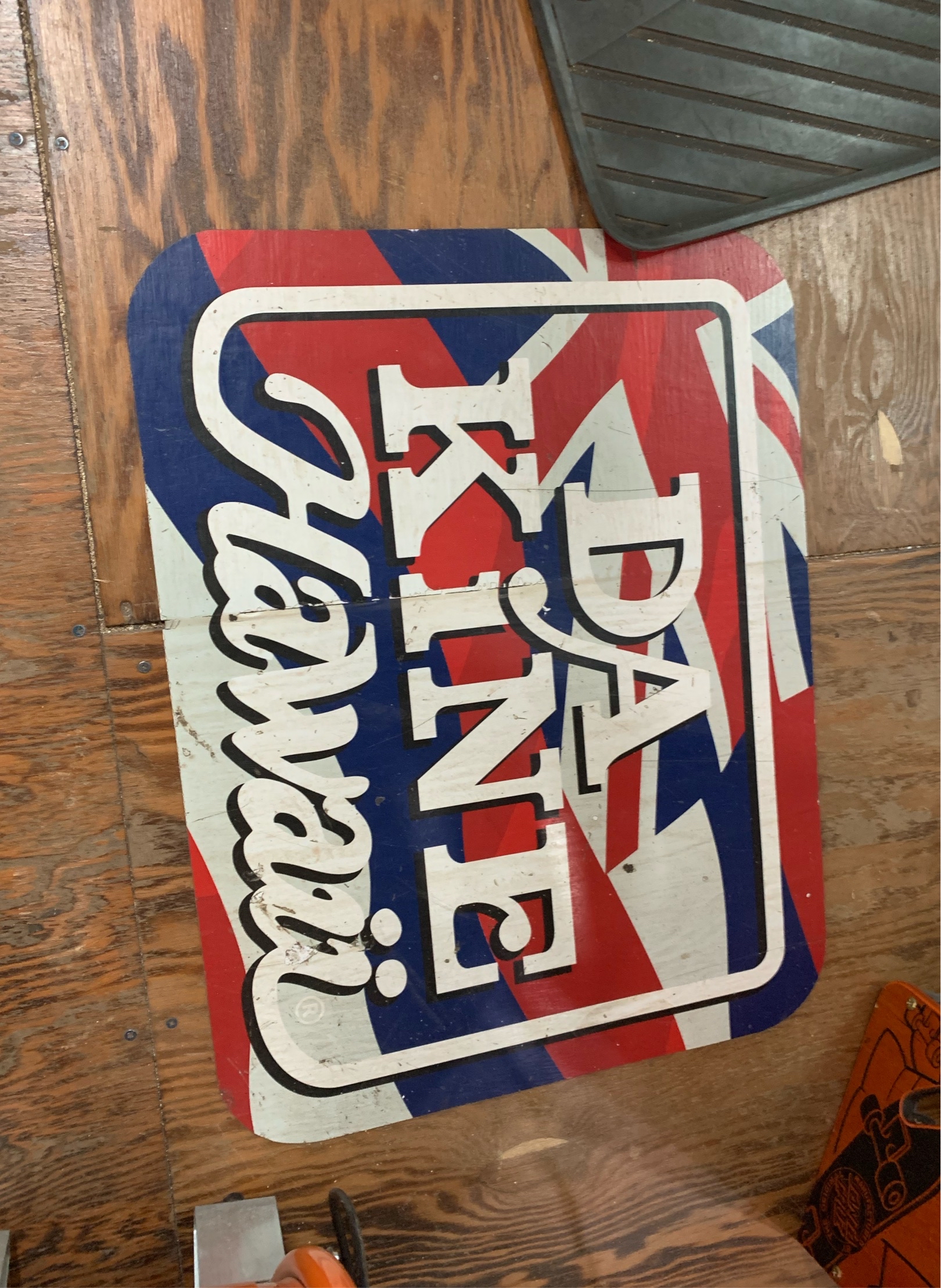
|
47079
|
|
United States
Haleiwa
|
|
|
(SK) (#3) This photo is located in the North Shore of Oahu, specifically in Haleiwa. This is a floor mat found in a local surf shop with the Hawaiian flag in the background with the Pidgin phrase “DaKine.” The use of Pidgin on this floor mat is just as decoration and in a way familiarizing/normalizing Pidgin. The target audience is anyone who steps into the surf shop and looks around.
|
Multilingual Hawaiʻi
|
|

|
47078
|
|
United States
Honolulu
|
|
|
(SK) (#3) This poster is also found in the freshman towers located on campus. The point of the poster is to educate the students/residents of the Center for Hawaiian Studies by incorporating Hawaiian and giving definitions to Hawaiian phrases. The poster is also trying to influence students to think about the possibility of studying in Hawaiian Studies. The target audience is specifically freshman students who are interested in finding out more about this program
|
Multilingual Hawaiʻi
|
|